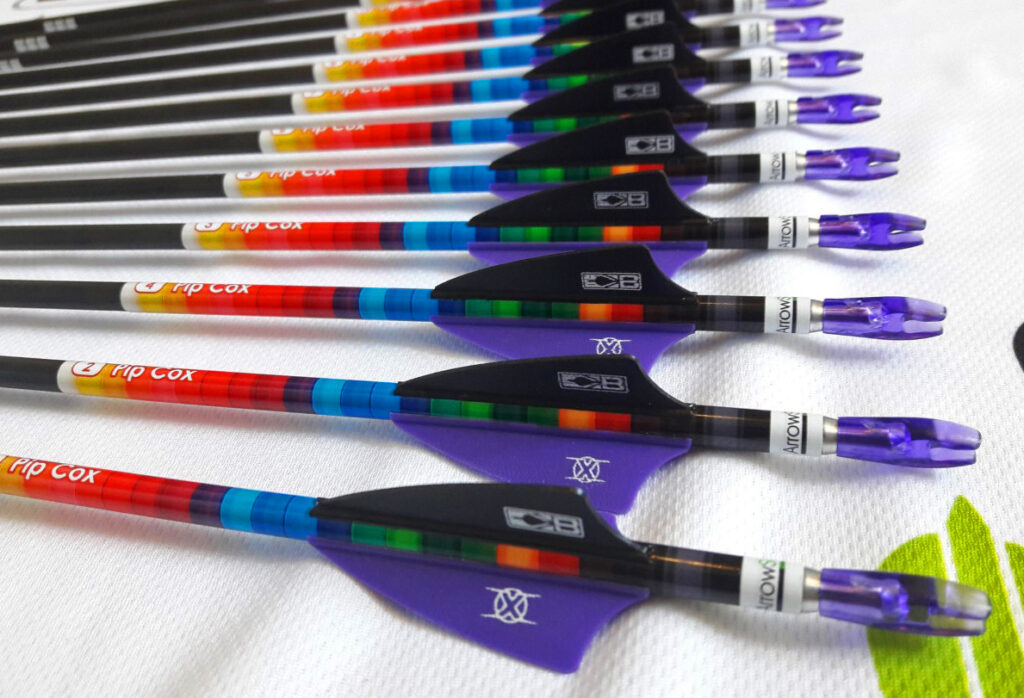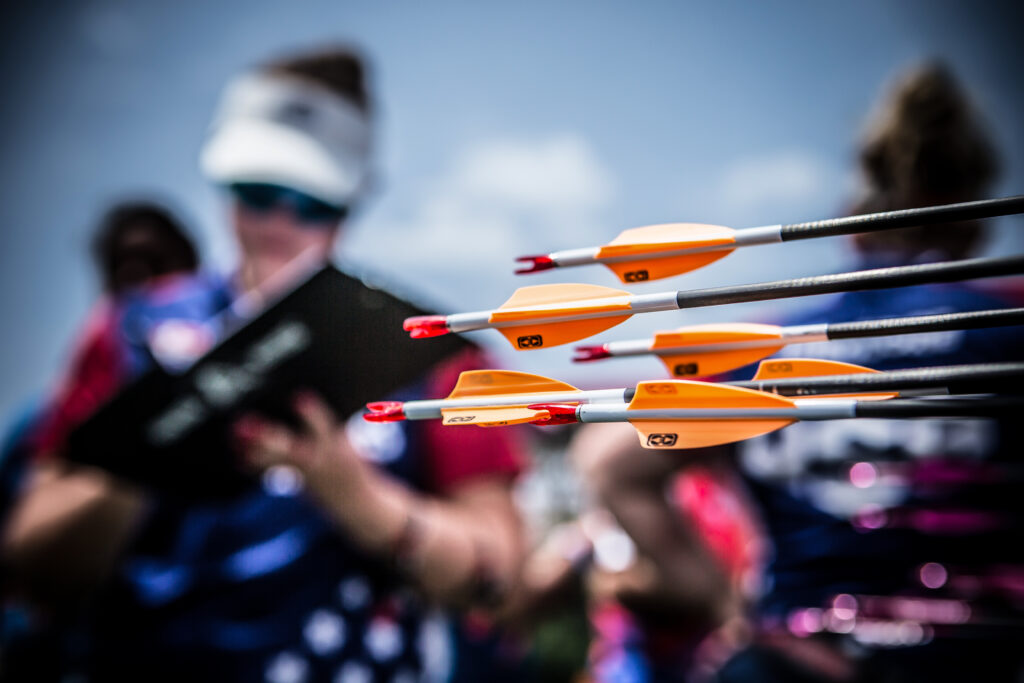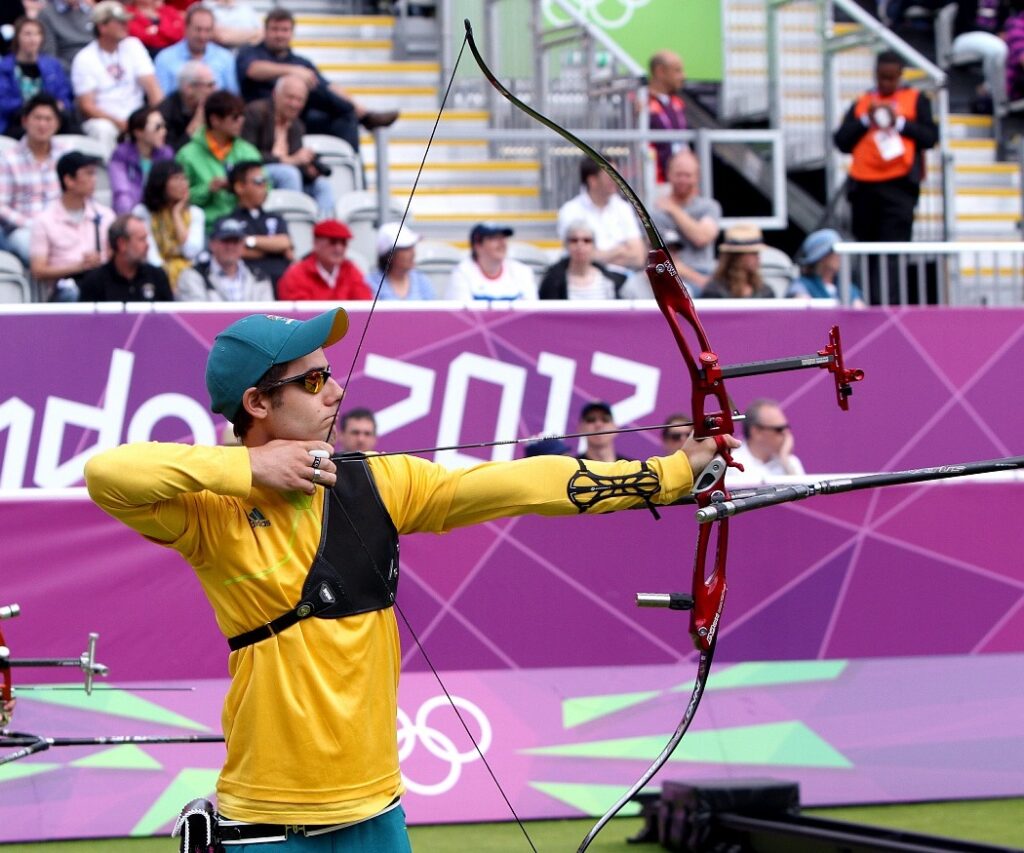Dr James Park tackles a modern issue
A question came to the Bow office recently: can an arrow be forced to spin too fast and create a vacuum/parachuting effect, literally stalling it at the longer distances? It’s an interesting question and worth some thought, especially considering the introduction of new types of vanes recently.
An aeroplane’s wings create the lift that hold the aeroplane up. The lift is proportional to the area of the wings and the lift coefficient and proportional to the velocity squared. Consequently, if the aeroplane slows down, it needs a higher lift coefficient or more wing area to stay up.
That is usually obtained by increasing the wing area and by using the rear wing to increase the angle of attack of the main wing. If the angle of attack is increased too much, the airflow over the top of the wing separates from the wing surface and the wing stalls and loses its lift. The drag also increases, and the aeroplane will be in the ground very quickly. So, if you are in the aeroplane, that is not a place you want to go.
On the other hand, as the aeroplane speed increases, the lift rapidly increases (remember, it is proportional to the velocity squared). Consequently, to maintain a constant height as the speed increases, the aeroplane needs a smaller lift coefficient for the wings. This is obtained by using the rear wing to lower the angle of attack of the front wing until we have just the right amount of lift to counteract gravity.
What fletchings need to do
As I have previously noted, we need the fletching to provide sufficient lift to get the arrow to line up with its direction of travel in a reasonable time and also to spin the arrow so that any non-uniformities in the arrow are annulled.
The first of these requirements sets the total fletch area we need. We get the second by setting the fletches at an angle to the arrow shaft’s longitudinal axis. Spinwings and other similar vanes have that angle built in.
We do not need to spin the arrow very fast in order to deal with any non-uniformities. If it rotates a few times during the shortest distance we shoot, that will be sufficient. More than that is not needed (and is just wasting a bit of energy).
The shortest distance I shoot is 10m in a field round – if I can have the arrow rotate perhaps two to three times in that first 10m, that will be sufficient. That is easily obtained for my X10s with the vanes at an angle of one or two degrees. A Spinwing will easily do it as well. We need a bit of energy to get the arrow spinning, and that comes straight off the arrow speed – but it is only a couple of feet per second and well worth it, given the better grouping.
When an arrow is on the bow’s string during the power stroke it cannot rotate. Immediately as it leaves the string, lift from angled fletches causes it to start to rotate about the shaft’s longitudinal axis. As the rotation rate increases, the angle of attack of the fletches with respect to the effective airflow decreases and consequently the fletch lift coefficient decreases.
For a straight fletch at an angle, we eventually get to a point where the fletch is edge on to the effective airflow. At that point, the lift coefficient will be zero and the shaft rotation rate will settle down to a stable rate – it will not keep increasing because for a faster rotation rate the angle of attack and the lift coefficient would be negative, and that would slow it down to the stable rate.
Shaped vanes
It is exactly the same for shaped vanes. As the arrow moves down range it will slow down due to aerodynamic drag – the drag is dominated by the shaft surface area and, to a lesser extent, by the fletch area and profile. Consequently, that stable rotation rate will decrease down range.
Note that the decrease in angle of attack of the fletches as the fletches get near to their stable rotation rate, and hence the decrease in lift, means that the arrow will not spin too fast and create a parachuting effect.
However, if fletches are not all attached at the same angle there will be a marked increase in the aerodynamic drag. That can easily happen with the fletches usually used on arrows for recurve bows, which are frequently applied by hand. That could easily end up with the arrow slowing down a lot and grouping poorly at longer distances – it could look like parachuting. Remember that as the arrow slows down, the lift from the fletches decreases and so does their ability to keep the arrow going straight.
As this is very important, I always check a recurve archer’s fletches by looking along the shaft to ensure they are all at the same angle. In 2011 to 2013 I was the coach for Australia’s recurve team, including for London 2012.
My archers were a little surprised the first time I checked their arrows and pulled off all the fletches that were not at the correct angle – after that they took much more care and did it correctly. The message: even top archers get fletches at different angles, and it matters!




